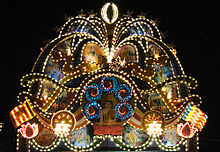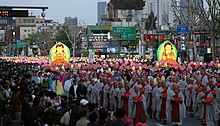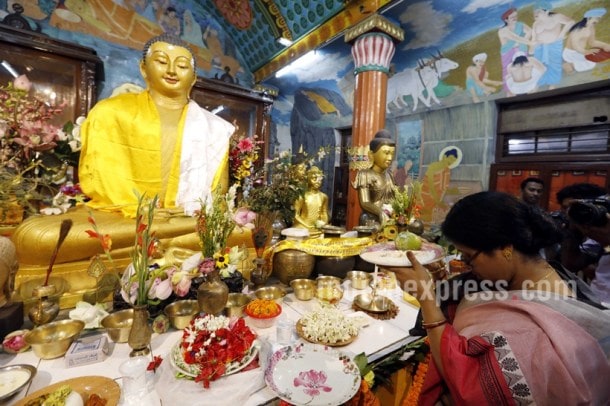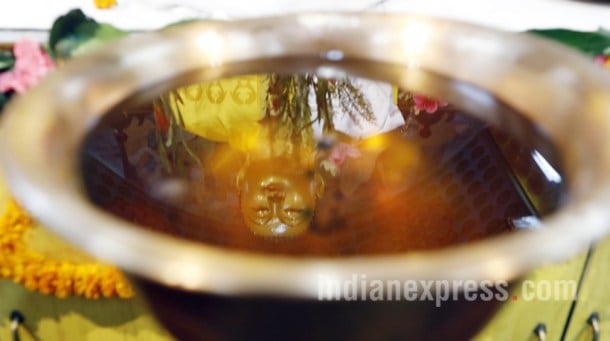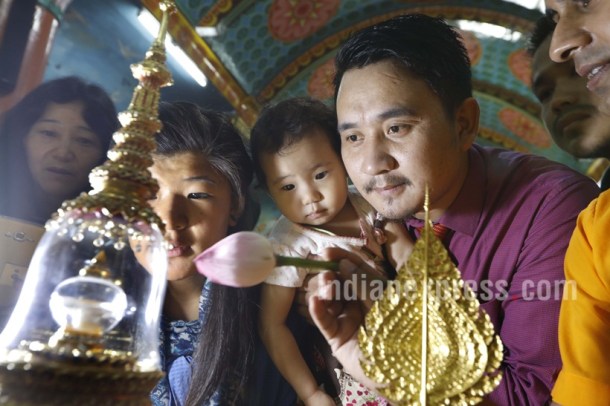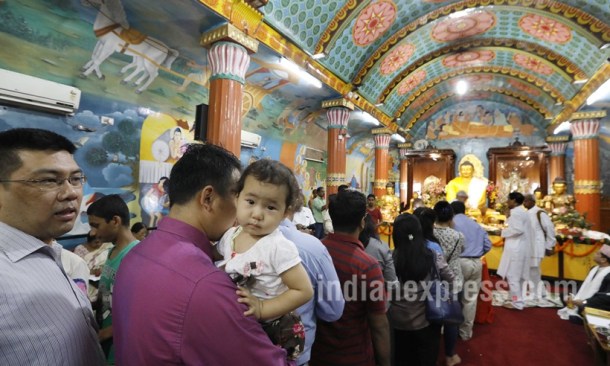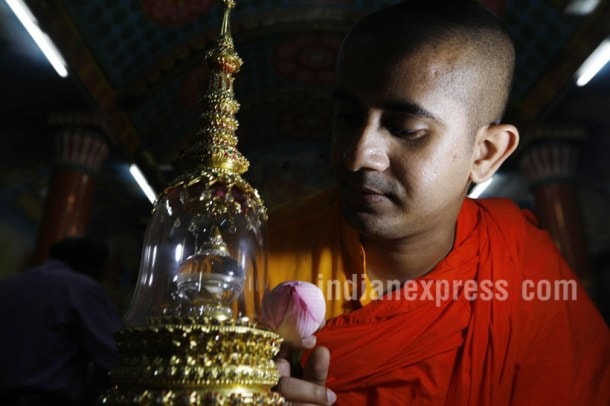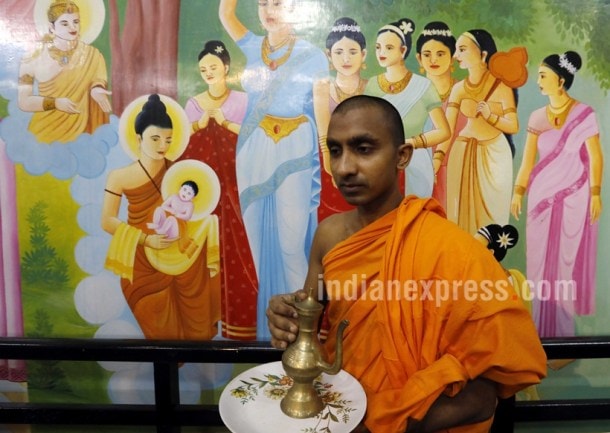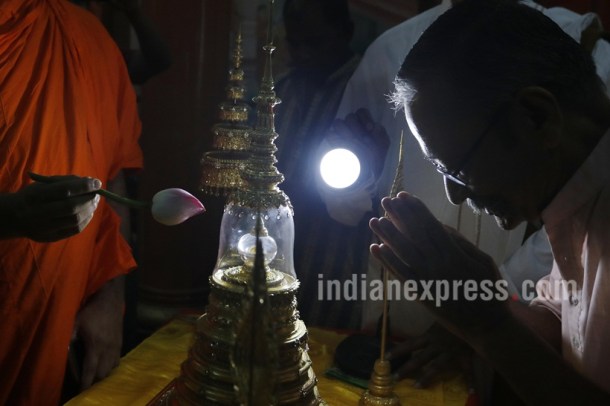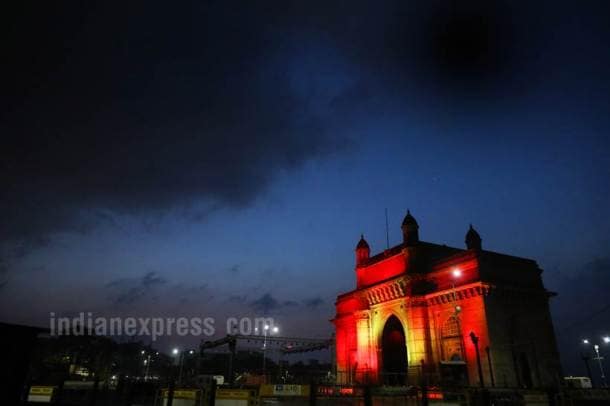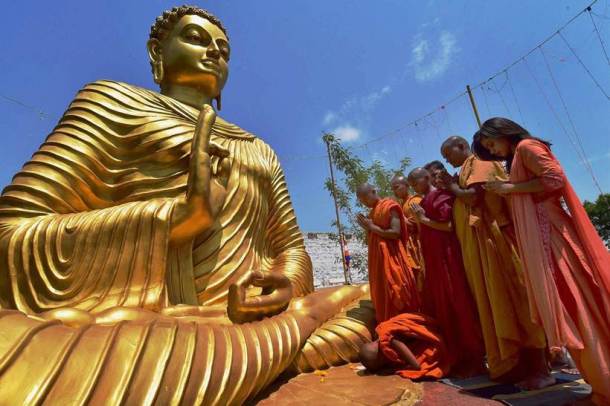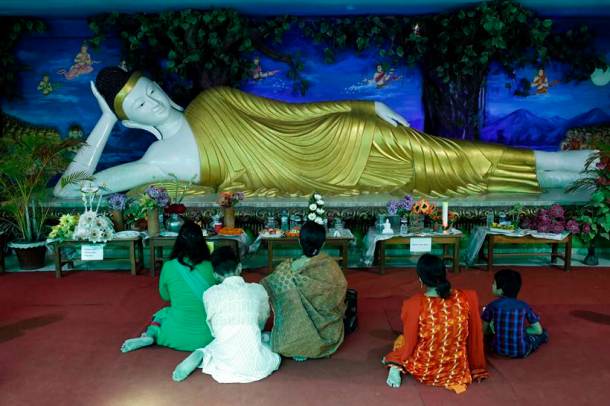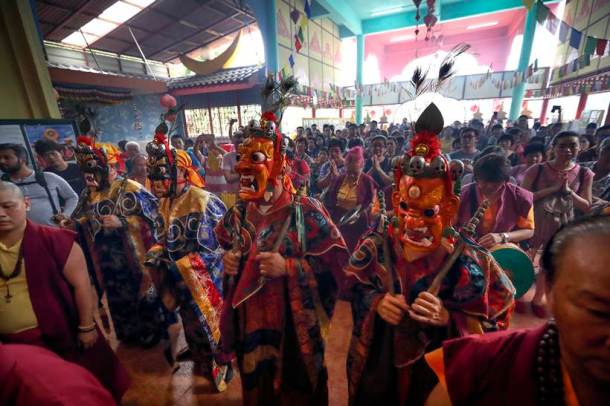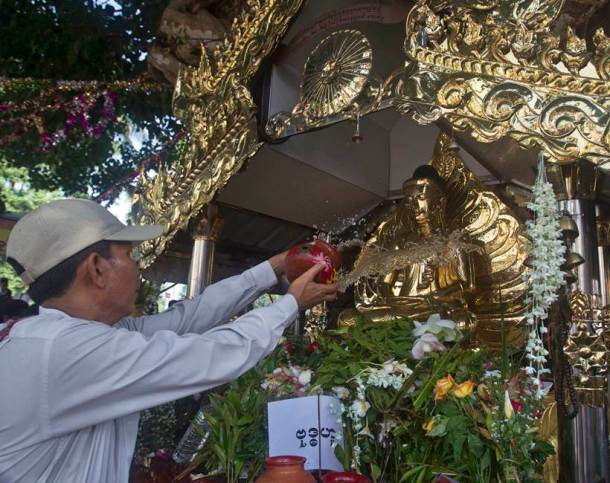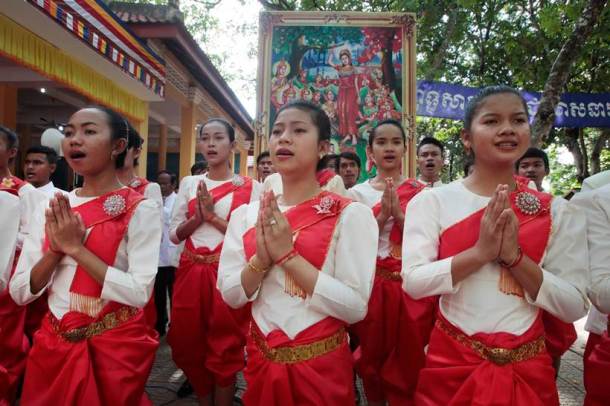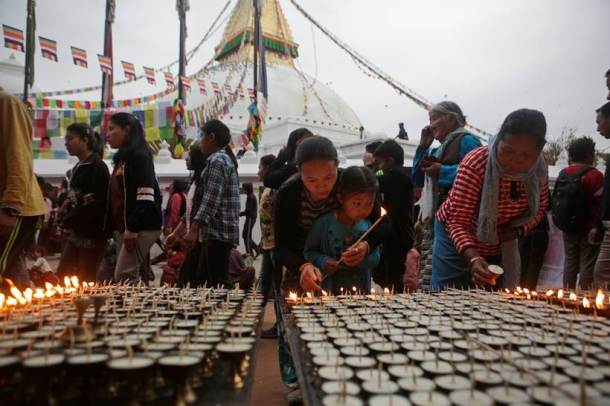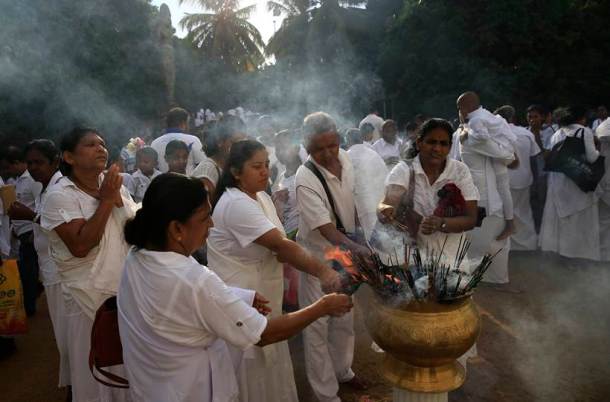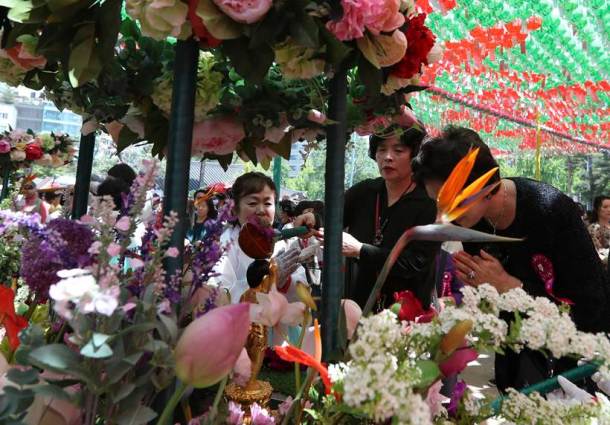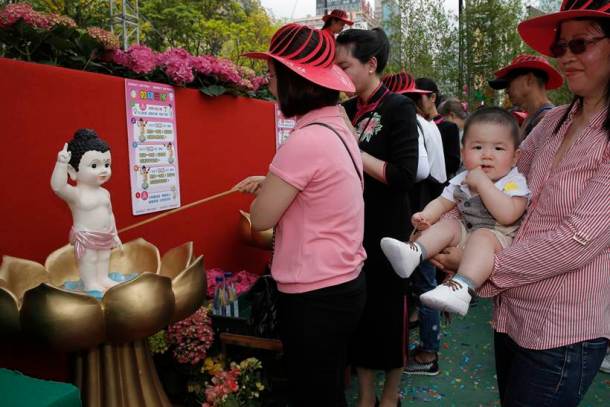https://www.motionelements.com/…/celebrating-enlightenment-…
Vesak day: Celebrating Awakenment with Awareness Around the World
Vesak Day may be known by different names around the world, but
Buddhists around the world come together as they celebrate sacred events
in Buddha’s life—birth, awakenment with awareness and passing away.
Vesak is the fourth month of the lunar calendar. Vesak Day is celebrated
on different dates in spring around the world. Usually, it is
celebrated following the first full moon in May.
Origin of Vesak day
Buddha was born as Siddhartha, the crown prince of the Sakya tribe in
the garden of Lumbini, Nepal. He left his home to join his people when
he was 29 and chose the life of an ascetic when he was faced with old
age, sickness and death. After practising for six years, he realised
that awakening would come only by meditation. Using grass as a mat, he
sat under the Peepal tree in Bodh Gaya, located in India’s present-day
state of Bihar, facing east direction. He vowed not to rise until he
attained enlightenment. He sat for forty-nine days, and became the
Buddha or the enlightened one at the age of thirty-five. A Peepal tree
still stands at the same spot behind the main temple. It was planted in
the nineteenth century and is believed to be a direct descendant of the
original tree. Believers tie prayer flags to its branches and meditate
under it. A sense of peace and serenity fills the air, as Buddhist monks
sit around the tree to meditate and chant. Vesak is observed by
devotees to pay homage to Buddha. They take time to realize Buddha’s
wise and compassionate guidance and honour him with respect and joy.
Celebrate freedom from greed, hatred and ignorance on Vesak
Each Buddhist culture follows its own traditions for the day.
Sri Lanka
On Vesak Day, houses and streets are adorned with thousands of candles
and colourful buntings. Huge temporary temples, made of bamboo and cloth
are set up with elaborate electric light displays that depict different
stories from the Buddha’s life. Celebrations are subdued, focused on
prayers and chanting of scriptures. People wear white clothes. Sweets
are distributed and people refrain from eating meat or fish. Prayer
songs called bhakti geetha are sung. Colourful Vesak lanterns in various
shapes called Vesak koodu light up homes.
Singapore and Malaysia
Vesak is a day filled with goodwill and good deeds. Devotees perform
ceremonial bathing by pouring fragrant water over the statue of the baby
Prince Siddhartha which is usually placed in a vessel of perfumed water
and strewn with flowers. This symbolizes a fresh start in life by
cleansing one’s bad deeds and replacing them with good ones. In
Singapore, devotees buy caged birds and set them free on the Buddha’s
birthday.
Nepal
“Buddha Jayanti” has special meaning in
the birthplace of Buddha. Thousands of people come to Lumbini, where
prayer flags are replaced, stupas freshly painted and every temple
thoroughly cleaned. Buddhists gather for morning prayers at
Swayanbhunath temple, also known as “Monkey temple.” They then move to
Boudhanath in the afternoon to watch a Buddha image paraded on an
elephant. Crowds of devotees chant joyfully. Boudhanath stupa is lit
with fairy lights and thousands of wax candles surrounding it—creating a
peaceful sight in the golden glowing light.
India and Bangladesh
Vaisakha Puja or Buddha Purnima as it is called in these countries is a
time for Buddhist devotees to pay special attention to Buddha’s
teachings. Most devotees wear white and visit temples and listen to
monks give talks. Money, food and other useful items are donated to
organisations that care for the poor, sick and elderly. Pilgrims flock
to Bodh Gaya and light thousands of oil lamps at Mahabodhi temple.
Thailand
The Thai people call the festival Visakha Bucha. The main ceremonies
take place at Sanaam Luang, the public square in front of the King’s
Grand Place in Bangkok. A grand statue of the Buddha is displayed here
on the day. Buddhist monks from far off places visit the capital to pay
their respects and the capital is bathed in the bright colours of their
orange robes. Tents and stalls are set up around the capital at
different points surrounding statues of the Buddha with food being
distributed freely.
Indonesia
Hari Waisak celebrations
congregate at the Borobodur temple in Java. The main attraction is the
releasing of a multitude of colourful lighted lanterns into the air. The
sight of these lanterns rising into the night sky against the full moon
is nothing short of ethereal.
Vietnam and Cambodia
It is
known as Vesak or Phat Dan in Vietnam and the pagodas in Hanoi are
decorated with colourful flags and streamers on this occasion. In
Cambodia, where it is called Vesak Bochea, the streets are transformed
by processions of Buddhist monks carrying colourful flags and lotus
flowers. In the evening, it is a stunning sight to behold as the monks
pass through the streets holding candles and incense sticks.
Around the world
The festival is celebrated in Tibet as Saga Dawa, in Laos as Visakha
Bouxa, in Myanmar as Ka-sone and in Japan it is known by many names
including Hanamatsuri, Kanbutsu-e, Goutan-e, Busshou-e, Yokubutsu-e,
Ryugu-e and Hana-eshiki. Other places where it is celebrated include
Korea and China.
Have any footage or animation of Vesak Day?
Join Now and upload your works with us or find more hiqh quality footage and animation at Motion Elements
https://www.revolvy.com/main/index.php?s=Buddha%20Poornima&item_type=topic
Vesak (Pali: Vesākha, Sanskrit: Vaiśākha), also known as Buddha Purnima and Buddha Day, is a holiday traditionally observed by Buddhists and some Hindus on different days in India, Sri Lanka, Nepal, Tibet, Bangladesh, Bhutan, Indonesia, Singapore, Thailand, Cambodia, Laos, Malaysia, Myanmar, Mongolia and the Philippines and in China, Japan, South Korea, North Korea, Taiwan and Vietnam as “Buddha’s Birthday” as well as in other parts of the world.[6][7] The festival commemorates the birth, enlightenment (Buddhahood), and death (Parinirvāna) of Gautama Buddha in the Theravada or southern tradition.Buddha Purnima falls on different days in different countries. In India, Buddha Purnima 2018,
which is a gazetted holiday, can be observed on 30th April, Monday. It
is also known by different names in different countries. For example, in
Hong Kong it is called as Buddha’s birthday, in Indonesia it is called
as Waisak day, in Singapore it is known as Vesak day while in Thailand
it is called as Vaisakha Bucha day.[8]
History
The decision to agree to celebrate Wesākha as the Buddha’s birthday was formalized at the first conference of the World Fellowship of Buddhists
held in Sri Lanka in 1950, although festivals at this time in the
Buddhist world are a centuries-old tradition. The resolution that was
adopted at the World Conference reads as follows:
That
this Conference of the World Fellowship of Buddhists, while recording
its appreciation of the gracious act of His Majesty, the Maharaja of Nepal in making the full-moon day of Vesak a Public Holiday in Nepal,
earnestly requests the Heads of Governments of all countries in which
large or small number of Buddhists are to be found, to take steps to
make the full-moon day in the month of May a Public Holiday in honour of
the Buddha, who is universally acclaimed as one of the greatest
benefactors of Humanity.[9]
On
Vesākha Day, Buddhists all over the world commemorate events of
significance to Buddhists of all traditions: The birth, enlightenment
and the passing away of Gautama Buddha.
As Buddhism spread from India it was assimilated into many foreign
cultures, and consequently Vesākha is celebrated in many different ways
all over the world. In India, Vaishakh Purnima day is also known as
Buddha Jayanti day and has been traditionally accepted as Buddha’s birth
day.
In 1999, the United Nations resolved to internationally observe the day of Vesak at its headquarters and offices.[10]
The name of the observance is derived from the Pali term vesākha or Sanskrit vaiśākha, which is the name of the lunar month in the Hindu calendar falling in April–May (see Vaisakha).[11] In Mahayana
Buddhist traditions, the holiday is known by its Sanskrit name
(Vaiśākha) and derived variants of it. Local renditions of the name vary
by language, including:
-
Assamese: বুদ্ধ পূর্ণিমা Buddho Purnima
-
Bengali: বুদ্ধ পূর্ণিমা Buddho Purnima, বুদ্ধ জয়ন্তী Buddho Joyonti
-
Dzongkha: སྟོན་པའི་དུས་ཆེན་༥ འཛོམས་ Dhüchen Nga Zom
-
Burmese: ကဆုန်လပြည့် ဗုဒ္ဓနေ့ “Full Moon Day of Kason”
-
Chinese: 佛陀誕辰紀念日; pinyin: Fótuó dànchén jìniàn rì, 佛誕 (Fódàn, Birthday of the Buddha), 浴佛節 (Yùfójié, Occasion of Bathing the Buddha), 衛塞節 (Wèisāi jié)
-
Hindi: बुद्ध पूर्णिमा Buddha Pūrṇimā, बुद्ध जयन्ती Buddha Jayantī, वैशाख पूर्णिमा Vaisākh Pūrṇimā
-
Indonesian: Hari Raya Waisak
-
Japanese: 花祭り Hanamatsuri (Flower Festival)
-
Khmer: វិសាខបូជា Visak Bochea
-
Kannada: ಬುದ್ಧ ಪೌರ್ಣಮಿ Buddha Pournami
-
Korean Hangul: 석가 탄신일; Hanja: 釋迦誕辰日; RR: Seokka Tanshin-il (Birthday of the Shakyamuni Buddha), Korean: 부처님오신날 (Buddha’s Day)
-
Lao: ວິສາຂະບູຊາ Vixakha Bouxa
-
Malay: Hari Wesak (هاري ويسق)
-
Mongolian: Бурхан Багшийн Их Дүйцэн Өдөр (Lord Buddha’s Great Festival Day)
-
Marathi: बुद्ध पोर्णिमा Buddha Pornima
-
Nepal Bhasa: स्वांया पुन्हि Swānyā Punhi
-
Nepali: बुद्ध पुर्णिमा Buddha Purnima, बुद्ध जयन्ति Buddha Jayanti
-
Sinhalese: වෙසක් Vesak
-
Tamil: விசாக தினம் Vicāka Tiṉam
-
Tagalog: Araw ng Bisyak
-
Telugu: బుద్ధ పౌర్ణమి Buddha Pournami or alternatively వైశాఖ పౌర్ణమి Vaisakha Pournami
-
Thai: วิสาขบูชา Wisakha Bucha
-
Tibetan: ས་ག་ཟླ་བ།, THL: Sa Ga Dawa
-
Vietnamese: Phật Đản (Birthday of the Buddha)
Celebration
May 2007 had two full moon days: the 1st and the
31st. Some countries (including Sri Lanka, Cambodia and Malaysia)
celebrated Vesākha on the 1st, and others (Thailand, Singapore)
celebrated the holiday on the 31st because of a different local lunar
observance. The difference also manifests in the observance of other
Buddhist holidays, which are traditionally observed at the local full
moon.
Likewise, in 2012, Vesak was observed on 28 April in Hong
Kong and Taiwan, on 5 May in Sri Lanka, on 6 May in India, on 28 May in
South Korea and on 4 June in Thailand. (In 1999, the Taiwanese
government set Buddha’s birthday as the second Sunday of May, the same
date as Mother’s Day.[12][13]). In 2014, Vesak is celebrated on 13 May in Myanmar, Singapore and Thailand while it is observed on 15 May in Indonesia.
On
Vesākha, devout Buddhists and followers alike assemble in their various
temples before dawn for the ceremonial and honorable hoisting of the Buddhist flag and the singing of hymns in praise of the holy triple gem: The Buddha, The Dharma (his teachings), and The Sangha
(his disciples). Devotees may bring simple offerings of flowers,
candles and joss-sticks to lay at the feet of their teacher. These
symbolic offerings are to remind followers that just as the beautiful
flowers would wither away after a short while and the candles and
joss-sticks would soon burn out, so too is life subject to decay and
destruction. Devotees are enjoined to make a special effort to refrain
from killing of any kind. They are encouraged to partake of vegetarian
food for the day. In some countries, notably Sri Lanka, two days are set
aside for the celebration of Vesākha and all liquor shops and slaughter
houses are closed by government decree during the two days.
Also
birds, insects and animals are released by the thousands in what is
known as a ’symbolic act of liberation’ of giving freedom to those who
are in captivity, imprisoned, or tortured against their will. (The
practice, however, is banned in some countries such as Singapore, as it
is believed that the released animals are unable to survive long-term
and may adversely impact the local ecosystem if they do.)[14]
Some
devout Buddhists will wear a simple white dress and spend the whole day
in temples with renewed determination to observe the Eight Precepts.

Young novice monk on Vesākha Day Parade
Devout Buddhists undertake to lead a noble life according to the teaching by making daily affirmations to observe the Five Precepts.
However, on special days, notably new moon and full moon days, they
observe the eight Precepts to train themselves to practice morality,
simplicity, and humility.
Some temples also display a small
statue of the Buddha in front of the altar in a small basin filled with
water and decorated with flowers, allowing devotees to pour water over
the statue; it is symbolic of the cleansing of a practitioner’s bad
karma, and to reenact the events following the Buddha’s birth, when
devas and spirits made heavenly offerings to him.
Devotees are
expected to listen to talks given by monks. On this day, monks will
recite verses uttered by the Buddha twenty-five centuries ago to invoke
peace and happiness for the government and the people. Buddhists are
reminded to live in harmony with people of other faiths and to respect
the beliefs of other people as the Buddha taught.
Bringing happiness to others
‘>
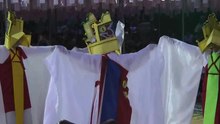
Video Korean Buddhist monks perform ritual dances and music on Buddha’s Birthday.
Celebrating
Vesākha (Vesak) also means making special efforts to bring happiness to
the unfortunate like the aged, the handicapped and the sick. To this
day, Buddhists will distribute gifts in cash and kind to various
charitable homes throughout the country. Vesākha is also a time for
great joy and happiness, expressed not by pandering to one’s appetites
but by concentrating on useful activities such as decorating and
illuminating temples, painting and creating exquisite scenes from the
life of the Buddha for public dissemination. Devout Buddhists also vie
with one another to provide refreshments and vegetarian food to
followers who visit the temple to pay homage to the Enlightened One.
Paying homage to the Buddha
Tradition ascribes to the Buddha
himself instruction on how to pay him homage. Just before he died, he
saw his faithful attendant Ananda, weeping. The Buddha advised him not to weep, but to understand the universal law that all compounded things
(including even his own body) must disintegrate. He advised everyone
not to cry over the disintegration of the physical body but to regard
his teachings (The Dhamma) as their teacher from then on, because only
the Dhamma truth is eternal and not subject to the law of change. He
also stressed that the way to pay homage to him was not merely by
offering flowers, incense, and lights, but by truly and sincerely
striving to follow his teachings. This is how Buddhists are expected to
celebrate Vesak: to use the opportunity to reiterate their determination
to lead noble lives, to develop their minds, to practise
loving-kindness and to bring peace and harmony to humanity.
Dates of observance
The exact date of Vesak is based on the Asian lunisolar calendars and is primarily celebrated in Vaisakha month of the Buddhist calendar and the Hindu calendar,
and hence the name Vesak. In Nepal, which is considered the
birth-country of Buddha, it is celebrated on the full moon day of the Vaisakha month of the Hindu calendar,
and is traditionally called Buddha Purnima, Purnima meaning the full
moon day in Sanskrit. In Theravada countries following the Buddhist calendar,
it falls on a full moon Uposatha day, typically in the 5th or 6th lunar
month. Nowadays, in Sri Lanka, Nepal, India, Vesak/Buddha Purnima is
celebrated on the day of the full moon in May in the Gregorian calendar.
In Thailand, Laos, Indonesia, Vesak is celebrated on the fourteenth or
fifteenth day of the fourth month in the Chinese lunar calendar. In
China, and Korea, Vietnam, Buddha’s Birthday
is celebrated on the eighth day of the fourth month in the Chinese
lunar calendar, in Japan the same day but in the Gregorian calendar. The
date varies from year to year in the Western Gregorian calendar, but
usually falls in April or May. In leap years it may be celebrated in
June.
In the following table, year numbers in the range 2500-2599 are BE (Buddhist Era).
| Year (CE) |
Thailand[15]
|
Singapore |
Laos |
Myanmar |
Sri Lanka |
Cambodia |
Indonesia |
Nepal & India |
China |
Malaysia |
Vietnam[16]
|
| 2001 |
7 May 2544 |
7 May |
|
6 May 2545 |
7 May 2545 |
7 May 2545 |
7 May 2545 |
|
30 May |
7 May |
6 Jun |
| 2002 |
26 May 2545 |
27 May |
|
26 May 2546 |
26 May 2546 |
26 April 2546 |
26 May 2546 |
|
19 May |
26 May |
26 May |
| 2003 |
15 May 2546 |
15 May |
|
15 May 2547 |
15 May 2547 |
15 May 2547 |
16 May 2547 |
|
8 May |
15 May |
15 May |
| 2004 |
2 Jun 2547 |
2 Jun |
|
3 May 2548 |
4 May 2548 |
3 May 2548 |
3 Jun 2548 |
3 May |
26 May |
3 May |
2 Jun |
| 2005 |
22 May 2548 |
23 May |
|
22 May 2549 |
23 May 2549 |
22 May 2549 |
24 May 2549 |
23 May |
15 May |
22 May |
22 May |
| 2006 |
12 May 2549 |
12 May |
|
11 May 2550 |
12 May 2550 |
12 May 2550 |
13 May 2550 |
13 May |
5 May |
12 May |
12 May |
| 2007 |
31 May 2550 |
31 May |
31 May 2550 |
30 April 2551 |
1 May 2551 |
1 May 2551 |
1 Jun 2551 |
2 May |
24 May |
31 May |
31 May |
| 2008 |
19 May 2551 |
19 May |
18 May 2551 |
19 May 2552 |
19 May 2552 |
19 May 2552 |
20 May 2552 |
20 May |
12 May |
19 May |
19 May |
| 2009 |
8 May 2552 |
9 May |
8 May 2552 |
8 May 2553 |
8 May 2553 |
8 May 2553 |
9 May 2553 |
8 May |
2 May |
9 May |
9 May |
| 2010 |
28 May 2553 |
28 May |
28 May 2553 |
27 April 2554 |
27 May 2554 |
28 April 2554 |
28 May 2554 |
27 May |
21 May |
28 May |
28 May |
| 2011 |
17 May 2554 |
17 May |
17 May 2554 |
17 May 2555 |
17 May 2555 |
17 May 2555 |
17 May 2555 |
17 May |
10 May |
17 May |
17 May |
| 2012 |
4 Jun 2555 |
5 May |
5 May 2555 |
5 May 2556 |
5 May 2556 |
5 May 2556 |
6 May 2556 |
6 May |
28 April |
5 May |
5 May |
| 2013 |
24 May 2556 |
24 May |
24 May 2556 |
24 May |
24 May 2557 |
24 May |
25 May 2557 |
25 May |
24 May |
24 May |
24 May |
| 2014 |
13 May 2557 |
13 May |
13 May 2557 |
13 May |
14 May 2558 |
13 May |
15 May 2558 |
14 May |
|
13 May |
13 May |
| 2015 |
1 Jun 2558 |
1 Jun |
2 May 2558 |
2 May 2559 |
3 May 2559 |
3 May 2559 |
2 Jun 2559 |
4 May |
25 May |
3 May |
1 Jun |
| 2016 |
20 May 2559 |
21 May |
|
21 May 2560 |
21 May 2560 |
21 May 2560 |
22 May 2560 |
21 May |
14 May |
21 May |
14 May |
| 2017 |
10 May 2560 |
10 May |
|
10 May 2561 |
10 May 2561 |
|
11 May 2561 |
10 May |
3 May |
10 May |
10 May |
| 2018 |
|
|
|
29 April 2562 |
29 April 2562 |
|
29 May 2562 |
|
|
29 May |
29 May |
| 2019 |
|
|
|
18 May 2563 |
|
|
|
|
|
|
19 May |
| 2020 |
|
|
|
6 May 2564 |
|
|
|
|
|
|
6 Jun |

Vesak is celebrated in
Jetavana, India, 2011
In Japan
In Japan, Vesākha or hanamatsuri (花祭)
:max_bytes(150000):strip_icc()/GettyImages-562403521-596dda71396e5a00112cfc62.jpg)
 https://www.motionelements.com/blog/articles/celebrating-enlightenment-around-the-world-on-vesak-day
https://www.motionelements.com/blog/articles/celebrating-enlightenment-around-the-world-on-vesak-day



